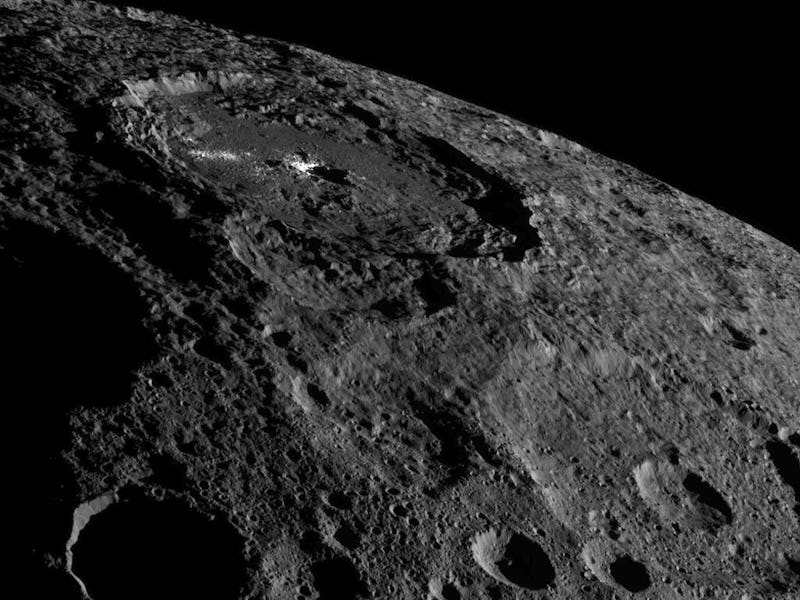New Photo Shows the Dwarf Planet Ceres May Have a Salty Subsurface

NASA’s recently released of the dwarf planet Ceres in our solar system that give us a new sense about what’s shaking on the planet between Mars and Jupiter.
The images, captured by the Dawn spacecraft, show there may be some relatively recent geologic activity in an area called the Occator Crater.
It turns out that Ceres is a lot more vibrant than ever imagined. There are cryovolcanos and water ice reserves.
Ceres is chock-full of craters, but Occator is different: Scientists noticed a bright spot in the center of the 57-mile-wide crater thanks to new images taken by Dawn, and they think there’s a good chance that bright streak is made up of salts from below the planet’s surface. The salts were probably left behind by liquid that made it to the surface after the impact that caused the crater. The liquid then froze and sublimated. As the ice turned to vapor, any minerals in the solution were left behind.
Occator Crater on the dwarf planet Ceres
There are other bright spots on Ceres, and it’s still not clear if all them are salts like in Occator Crater.
Dawn will continue to orbit Ceres, moving from an altitude of 920 miles above the surface to 4,500 miles, where it will collect more measurements of the planet, as well as measurements of background cosmic radiation that will help them refine measurements.